Feasibility Studies Cost Studies Financing Technologies
This section includes resources on feasibility studies of zero energy on district, state, and national levels; cost studies which address the challenge of zero energy construction within a budget; means of financing a zero energy project and incentive programs to support this; and technologies which drive zero energy design.
As a result of advances in construction technologies, renewable energy systems, and other research, ultra-low and zero energy design is becoming more achievable. Studies find that zero energy is technically feasible for most building types. Methods to achieve zero energy vary by building type, size and location. In all cases, the key strategy is to reduce energy loads as much as possible before introducing renewables. Although much of this technology is widely available, often at a cost comparable to code-minimum systems, many stakeholders still see cost as a major barrier to zero energy buildings. However, studies show that zero energy is a cost effective investment – in many cases a better investment than a code minimum building, and it is even more justifiable when benefits such as health and environmental quality are taken into account. Many financing and incentive options are available from a variety of sources to encourage zero energy design and market growth.
FEASIBILITY STUDIES
Zero Net Energy Case Study Buildings, Volume 1
This resource provides information about six non-residential buildings designed and built to perform at zero net energy (ZNE) consumption over the course of a year. Each of these buildings has proven to be successful at achieving that level of performance for at least one year of post-construction occupancy. As the case studies illustrate, architects and engineers generally have the skills and experience to design ZNE buildings, if the goal of ZNE is embraced early in the process and involves the related disciplines with each decision.
Zero Net Energy Case Study Buildings, Volume 2 
Volume 2 of Zero Net Energy Case Study Buildings, like Volume 1, provides a detailed discussion and analysis of a number of exemplary buildings designed and that performed at zero-net-energy use over the course of a year. There are five buildings documented in this publication. In the time between the occupancy of the buildings in Volume 1 and Volume 2, roughly three to seven years, there were advances in building technologies and the dissemination of information about successful strategies for zero-net-energy (ZNE) design.
Zero Net Energy Case Study Buildings, Volume 3
The third volume in this series of books, Zero Net Energy Case Study Buildings, is similar to Volume 1 and Volume 2 in that it contains a series of detailed case studies of well-designed, recently-constructed buildings that use an annual total of zero energy. Included are descriptions of the design process, the design strategies utilized for each building type, the renewable energy systems, the results of energy modeling and comparison with post-occupancy energy measurements. Additionally, Volume 3 provides information in some new ways.
Assessment of the Technical Potential for Achieving Net Zero-Energy Buildings in the Commercial Sector
This report summarizes the findings from research conducted at National 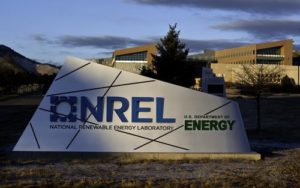 Renewable Energy Laboratory (NREL) to assess the technical potential for zero net energy (ZNE) building technologies and practices to reduce the impact of commercial buildings on the US energy system. In this study, NREL researchers developed quantitative predictions to answer the questions: How low can you practically go in terms of energy use? To what extent can rooftop photovoltaics supply the remaining energy needs of commercial buildings? The analysis is limited to the technical potential and does not assess market penetration or make detailed projections for how the various commercial building subsectors might evolve by 2025.
Renewable Energy Laboratory (NREL) to assess the technical potential for zero net energy (ZNE) building technologies and practices to reduce the impact of commercial buildings on the US energy system. In this study, NREL researchers developed quantitative predictions to answer the questions: How low can you practically go in terms of energy use? To what extent can rooftop photovoltaics supply the remaining energy needs of commercial buildings? The analysis is limited to the technical potential and does not assess market penetration or make detailed projections for how the various commercial building subsectors might evolve by 2025.
Establishing Feasibility of Residential Zero Net Energy Community Development – Learnings from California’s First ZNE Neighborhood
The State of California has set the goal that by 2020, all new homes in California be constructed to zero energy standards as defined by the state. The Electric Power Research Institute (EPRI), BIRAenergy (BIRA), Meritage Homes and Southern California Edison (SCE) have partnered together to develop a community of 20 homes in Fontana, CA to this zero energy standard. This paper reflects activities completed by this group from February 2015 through March 2016 which focused on project planning, energy modeling and building construction of this Fontana zero energy community. The work focused on the modeling and construction of 20 zero energy homes and the development of a data monitoring and controls infrastructure for these homes.
Feasibility Study for a Net-Zero Campus Retrofit
This paper first discusses a path to zero energy for the Akron Zoo campus that may be a model for other commercial facilities. This path includes aggressive energy-efficiency combined  with on-site renewable energy installations. Next, the analysis focuses on major implementation constraints, particularly on limited usable space for renewable energy generation. Further, economic comparisons between energy-efficiency and renewable energy are used to determine optimal economic decisions. Next it presents analysis of possible energy efficiency opportunities and how researchers arrived at unexpected conclusions. Finally, it presents conclusions that support the Akron Zoo’s capability to achieve zero energy status.
with on-site renewable energy installations. Next, the analysis focuses on major implementation constraints, particularly on limited usable space for renewable energy generation. Further, economic comparisons between energy-efficiency and renewable energy are used to determine optimal economic decisions. Next it presents analysis of possible energy efficiency opportunities and how researchers arrived at unexpected conclusions. Finally, it presents conclusions that support the Akron Zoo’s capability to achieve zero energy status.
Net Zero Energy Feasibility Study Full Report
The purpose of this study is to explore the financial feasibility of zero energy buildings in Vermont. The analysis provided here demonstrates that zero energy and zero energy ready buildings are a viable and cost effective investment, as compared to code compliant buildings. Using financing for the additional capital costs to build a zero energy building, there are net savings from year one for all building types in this study without applying any rebates or incentives except for the office/manufacturing building. The zero energy office/manufacturing building is also a better investment than a code building and will provide cumulating saving beyond the 20 years shown in this analysis. When considering energy cost volatility, health, and other environmental benefits the office/manufacturing building is even more of a prudent investment.
Parametric Analysis Tool to Study the Effects of Energy Conservation Measures on Building Energy Use Across California
This study set out to develop a less computationally intensive, interpolation approach based on EnergyPlus results to create a standalone tool which could accurately estimate the energy use intensity (EUI) and potential for zero energy of typical commercial buildings in different climate zones. The purpose of the tool is to assist in a study to investigate the EUI of the California building stock. This paper presents the motivation, functionality, and methodology behind the parametric analysis tool.
The Technical Feasibility of Zero Net Energy Buildings in California
This study is a forward-looking stress test of the zero net energy (ZNE) new construction goals set forth by California’s energy agencies. It assesses the potential performance of best-in-class building designs in 2020 for both residential and commercial structures. The analysis refined and simulated an integrated package of efficiency features and on-site renewable energy systems that could move each of twelve prototype buildings as close as is reasonably possible to ZNE. It finds that ZNE buildings will be technically feasible for much of California’s new construction market by 2020.
COST STUDIES
California Zero Net Energy Buildings Cost Study
This study explores the cost-effectiveness of zero energy buildings in the current residential and commercial marketplace through a review of literature, case 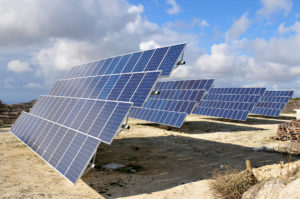 studies, and interviews with zero energy experts familiar with residential, commercial, and community-scale projects. The falling costs of photovoltaics, advanced energy modeling capabilities, expanded market awareness of zero energy, changing social attitudes, public policies, and incentive programs have increased the demand for energy efficient buildings. This study provides a breakdown of incremental costs for residential and commercial buildings, as well as strategies for designing and constructing zero energy.
studies, and interviews with zero energy experts familiar with residential, commercial, and community-scale projects. The falling costs of photovoltaics, advanced energy modeling capabilities, expanded market awareness of zero energy, changing social attitudes, public policies, and incentive programs have increased the demand for energy efficient buildings. This study provides a breakdown of incremental costs for residential and commercial buildings, as well as strategies for designing and constructing zero energy.
Cost Control Strategies for Zero Energy Buildings
The prevailing industry perception is that zero energy is cost prohibitive and suitable only for showcase projects with atypical, large budgets; however, there is mounting evidence that zero energy can, in many cases, be achieved within typical construction budgets. To help users maximize the opportunity for cost control in their projects, this guide provides the following content: detailed discussion of recommended cost control strategies which are grouped by project phase and accompanied by industry examples, recommendations for balancing key decision-making factors, and quick reference tables that can help design teams apply strategies to specific projects.
Implementation Model: Least Cost Procurement Strategy
Rhode Island established the principle of Least Cost Procurement as the key strategy to achieve the state’s ambitious energy savings and economic development goals. Least Cost Procurement prioritizes energy efficiency in state energy planning by directing the utility to invest in energy efficiency first whenever it proves cost-effective and less expensive than energy supply. Best practices in stakeholder engagement, utility motivation, sustainable funding, and program evaluation support energy efficiency as a driver of Rhode Island’s energy and economic success.
Net Zero and Living Building Challenge Financial Study: A Cost Comparison Report for Buildings in the District of Columbia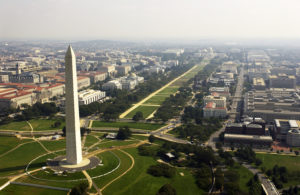
The purpose of the Net Zero and Living Building Challenge Financial Study: A Cost Comparison Report for Buildings in the District of Columbia was twofold. First, to investigate costs, benefits and approaches necessary to improve building performance in the District of Columbia from LEED platinum to zero energy, zero water and Living Building status. Second, to advise district government on policy drivers related to deep green buildings and to analyze the opportunities for the district to offer incentives to advance most rapidly toward zero energy, zero water and Living Buildings.
SunShot Vision Study
The objective of the SunShot Vision Study is to provide an in-depth assessment of the potential for solar technologies to meet a significant share of electricity demand in the United States during the next several decades. Specifically, it explores a future in which the price of solar technologies declines by about 75% between 2010 and 2020, in line with the U.S. Department of Energy (DOE) SunShot Initiative’s targets. As a result of this price reduction, solar technologies are projected to play an increasingly important role in meeting electricity demand over the next 20-40 years, satisfying roughly 14% of U.S. electricity demand by 2030 and 27% by 2050. In terms of technology, the SunShot Initiative and this report both focus on photovoltaics and concentrating solar power.
Zero Net Energy Building + Homes: Analyzing the Business Case (Chapter 4)
This article looks at the financial justification for a zero energy building. LEED is becoming the new normal in business, and zero energy may be soon to follow. The author addresses the cost of a zero energy building, benefits that the owner receives, financing options, and barriers to the affordability of zero energy.
FINANCING
Best Practice Guidelines for Residential PACE Financing Programs
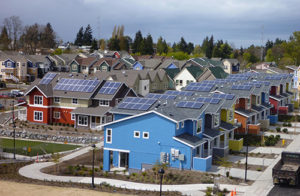 This document provides updated best practice guidelines to help implement the Policy Framework for PACE Financing Programs, initially announced in 2009. Property Assessed Clean Energy (PACE) financing programs allow state and local governments, where permitted by state law, to extend the use of land-secured financing to fund energy efficiency, renewable energy, and water conservation improvements on private property.
This document provides updated best practice guidelines to help implement the Policy Framework for PACE Financing Programs, initially announced in 2009. Property Assessed Clean Energy (PACE) financing programs allow state and local governments, where permitted by state law, to extend the use of land-secured financing to fund energy efficiency, renewable energy, and water conservation improvements on private property.
Better Buildings Financing Navigator
This list of Better Buildings Financial Allies represents market-leading financing companies that have committed to funding energy efficiency projects. Allies are sorted by the financing options offered and include detailed descriptions and contact information for beginning a project.
Borrowing to Save Energy: An Assessment of Energy-Efficiency Financing Programs
Residential and commercial buildings are responsible for 42 percent of energy consumption in the United States and a comparable percentage of U.S. carbon dioxide emissions. Experts have identified a number of building retrofits and equipment replacements that purportedly will yield future energy savings that more than cover the up-front investment costs. Why these seemingly cost-effective investments have not been made is a matter of vigorous debate. Numerous explanations ranging from incomplete and asymmetric information to irrational consumer behavior have been offered for this failure to invest, and numerous policies and approaches have been proposed and adopted to address the issue. This report focuses on one such approach: increased availability of debt financing for efficiency investments.
DSIRE: Database of State Incentives for Renewables & Efficiency
DSIRE is the most comprehensive source of information on incentives and policies that support renewables and energy efficiency in the United States. Established in 1995, DSIRE is operated by the N.C. Clean Energy Technology Center at North Carolina State University and is funded by the U.S. Department of Energy.
Financing Energy Improvements on Utility Bills: Market Updates and Key Program Design Considerations for Policymakers and Administrators
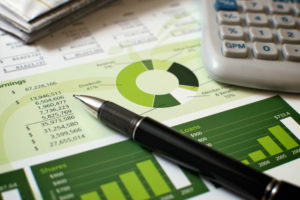 Energy efficiency program administrators and policymakers are exploring ways to increase their reliance on financing with the aim of amplifying the impact of limited program monies. In this context, offering programs that enable consumers to finance energy efficiency improvements on their utility bills are receiving increasing attention. The primary objectives of this report are to provide an updated review and analysis of existing on-bill programs, and to offer actionable insights on key program design issues for consideration by state policymakers, utility regulators and program administrators.
Energy efficiency program administrators and policymakers are exploring ways to increase their reliance on financing with the aim of amplifying the impact of limited program monies. In this context, offering programs that enable consumers to finance energy efficiency improvements on their utility bills are receiving increasing attention. The primary objectives of this report are to provide an updated review and analysis of existing on-bill programs, and to offer actionable insights on key program design issues for consideration by state policymakers, utility regulators and program administrators.
Financing Energy Improvements on Utility Bills: Technical Appendix Case Studies
This Technical Appendix provides domestic and international on-bill case studies to supplement the Financing Energy Improvements on Utility Bills report which reviews existing on-bill programs and offers insights on design issues. Ten domestic and two international case studies are included.
Green Energy Money: Financial Solutions to Value & Power a Sustainable Future
Green Energy Money (GEM) is partnering and connecting with US and Canadian stakeholders to offer a High-Performance Building and Green Energy Mortgage (GEM Loan®) Pilot Program, the GEM Loan Hi-PP Initiative. GEM has beta-tested its appraisal and lending practices and methods with several national and regional mortgage lending institutions and banks. This partnership successfully funded over $37m in loan volume, 78 units; during a 36-month Beta Program for high-performance projects where over 50 percent were near-to-net-zero homes.
Guide to Energy Efficiency & Renewable Energy Financing Districts for Local Governments
 Energy Financing Districts (Property Assessed Clean Energy, Sustainable Energy Financing, Clean Energy Assessment Districts, Contractual Assessments, or Special Tax Districts) were first proposed by the City of Berkeley, California in 2007 and have received increasing attention as a mechanism for financing residential or commercial clean energy projects, including energy efficiency, solar photovoltaic, or solar thermal systems. EFDs represent one specific and powerful example of an intellectual innovation that is broadly applicable to fostering a profitable transition to a clean energy economy at the local, regional, national, and global levels.
Energy Financing Districts (Property Assessed Clean Energy, Sustainable Energy Financing, Clean Energy Assessment Districts, Contractual Assessments, or Special Tax Districts) were first proposed by the City of Berkeley, California in 2007 and have received increasing attention as a mechanism for financing residential or commercial clean energy projects, including energy efficiency, solar photovoltaic, or solar thermal systems. EFDs represent one specific and powerful example of an intellectual innovation that is broadly applicable to fostering a profitable transition to a clean energy economy at the local, regional, national, and global levels.
Transforming Multifamily Housing: Fannie Mae’s Green Initiative and Energy Star for Multifamily
Rising utility rates create financial risk for owners and reduce affordability for tenants of multifamily properties. To combat this challenge and multifamily properties’ impact on the natural environment, the Fannie Mae Multifamily Mortgage Business (Fannie Mae) launched the Green Initiative. By 2014, Fannie Mae had financed $130 million in Green Preservation Plus loans or in loans that are backed by properties with a Green Building certification. These loans are securitized as Green Mortgage Backed Securities (Green MBS), a securitization standard set by Fannie Mae. Green Preservation Plus provides up to an 85% loan to value ratio for owners of affordable housing to transform their property through energy efficiency, water efficiency, and general property improvements.
TECHNOLOGIES
Energy Performance of Commercial Buildings with Radiant Heating and Cooling
The main goal of this research was to determine the building characteristics of projects with radiant heating and cooling and assess their real world energy use compared to standard benchmarks for building energy performance. The report describes the general building characteristics including type, size, location and climate zone of 23 buildings in North America with radiant distribution systems for both heating and cooling the predominant area of the building. The study found that almost all of the 23 buildings outperformed peer buildings and national benchmarks, suggesting that radiant systems are part of the integrated approach that can lead to low energy consumption in commercial buildings.
How Building Technologies Contribute to Net-Zero Energy Design
In this document, a broad range of technologies is discussed, from those with very long horizons to a number of proven, widely accepted materials and systems with shorter and more reliable payback scenarios. The paper presents many solutions for renewable energy systems and energy efficient materials and systems ranging from enclosure assemblies to electrical products.
Next Generation Technologies, Barriers & Industry Recommendations for Commercial Buildings
This report summarizes the barriers and recommendations from the five technology working groups of the Commercial Building Consortium (CBC) and is a companion summary analysis to a Commercial Buildings Technology Inventory. In development of the Commercial Buildings Technology Inventory, the CBC examined existing information sources, including published and gray literature, DOE and National Laboratory plans, industry-sponsored research programs, utility research on emerging technologies, and other sources. The CBC recognizes that there are still remaining gaps in the inventory to address in subsequent annual updates. A related technology screening effort currently underway through DOE and the National Labs. The CBC intends to provide industry input into that process and build off of results from that technology screening to further enhance a comprehensive next-generation technologies inventory.
Zero Energy Project Guide
A process for planning, designing, constructing, and operating your new zero energy building. Zero Energy Project Guide combines the steps that successful zero energy (ZE) building teams implement with ZE tools and resources. The guide outlines the importance of gaining stakeholder awareness, setting energy goals and targets, thoughtful team selection, finance and incentive opportunities, smart early design/design and construction considerations, project hand off, and operation and verification processes. It is complete with a high-level checklist that teams can reference throughout the life of a project. This guide is a useful project for anyone considering a ZE project or who is already engaged.
Zero Net Energy Building Controls: Characteristics, Energy Impacts and Lessons
The controls aspect of commercial buildings has been frequently cited as the linchpin to creating, and maintaining, buildings that perform for comfort and for optimum energy use. The building and system-level controls can be a cornerstone that secures performance, or a weak link that creates challenges for design teams and operators. Zero energy buildings are now at the forefront of energy efficient design and operations, yet little is known regarding energy-related control systems in these advanced structures. This project focused on the control aspects in zero energy buildings. The objective was to characterize monitoring and control systems in zero energy buildings focused on three key areas from the designer and user experience. The research outcomes will be widely published and used to influence controls design, installation, operations and occupant engagement.
optimum energy use. The building and system-level controls can be a cornerstone that secures performance, or a weak link that creates challenges for design teams and operators. Zero energy buildings are now at the forefront of energy efficient design and operations, yet little is known regarding energy-related control systems in these advanced structures. This project focused on the control aspects in zero energy buildings. The objective was to characterize monitoring and control systems in zero energy buildings focused on three key areas from the designer and user experience. The research outcomes will be widely published and used to influence controls design, installation, operations and occupant engagement.
Zero Net Energy Technology Application Guide: Indirect Evaporative Cooling
This guide provides an overview of radiant heating and cooling + dedicated outdoor air system (DOAS). It focuses on office applications, but other sectors such as retail, healthcare, museums and industrial applications are also good opportunities for radiant systems and DOAS.
Zero Net Energy Technology Application Guide: Luminaire Level Lighting Control
This guide provides an overview of luminaire level lighting control (LLLC), a lighting control with continuous dimming capability which is a fundamental efficiency strategy for projects targeting low or zero net energy. This guide describes the system, features and benefits, energy performance from both modeled and measured results, application considerations, costs and trends. It also includes a project profile and related resources. Applications include offices, corridors, industrial warehouses, retail and parking structures.
